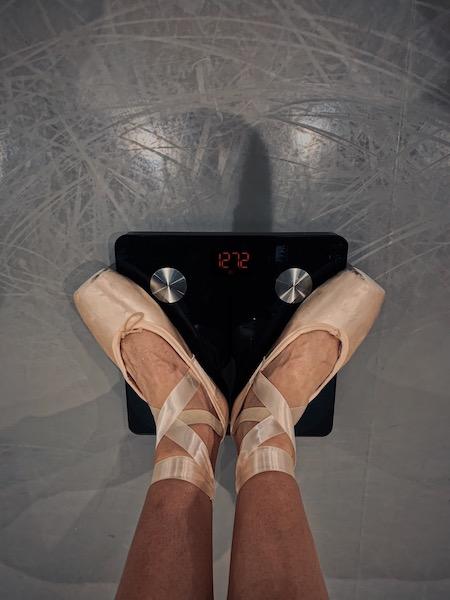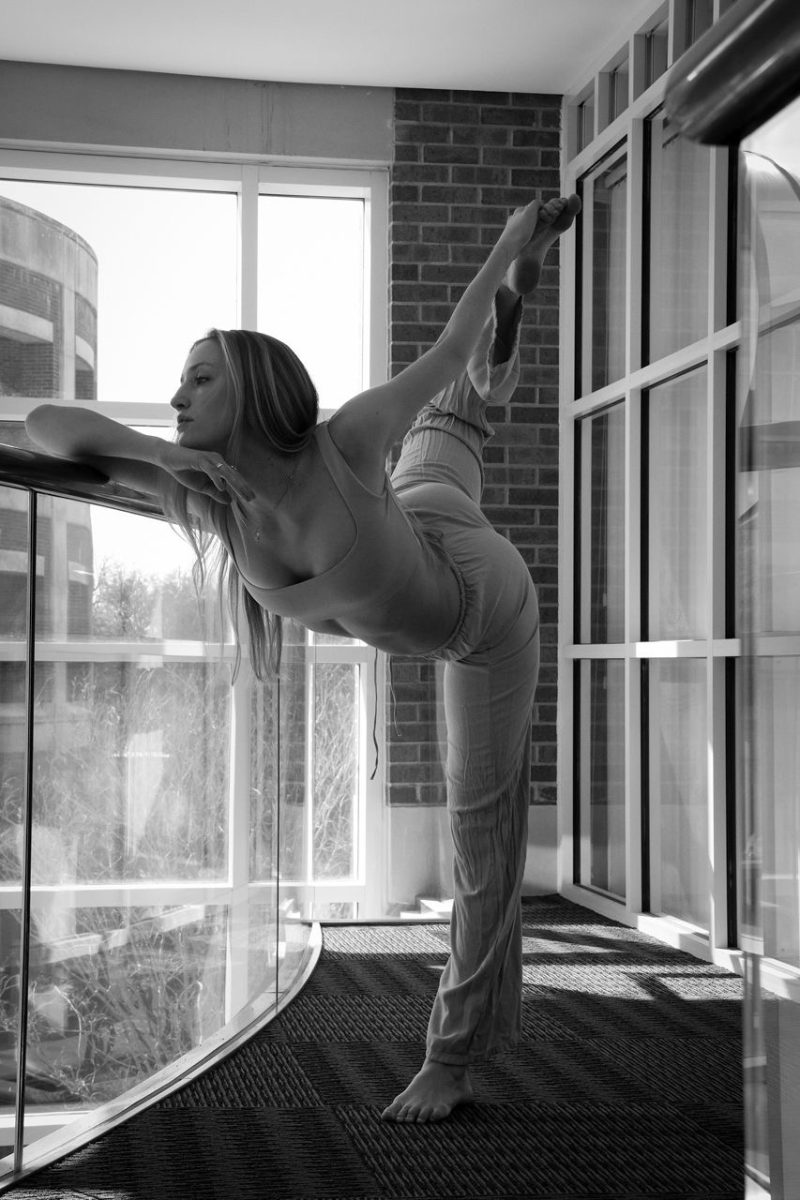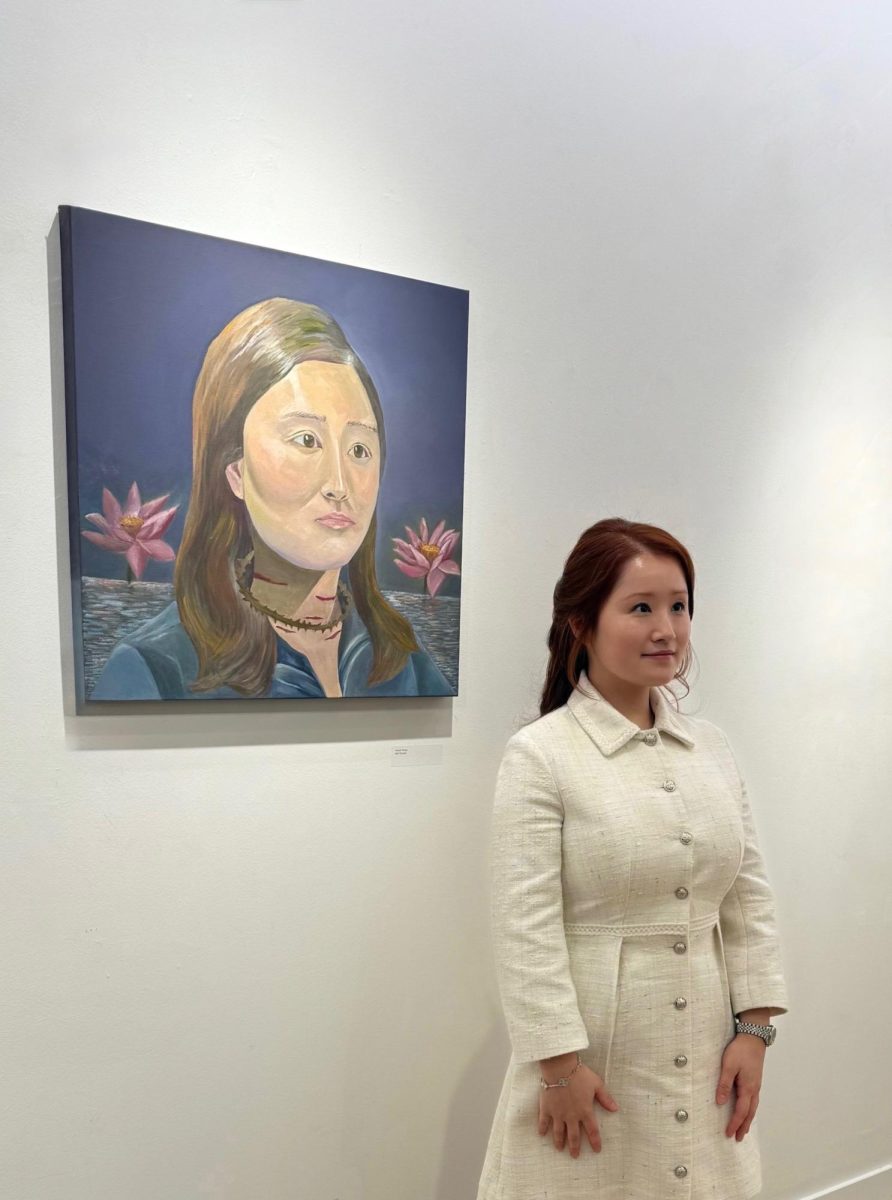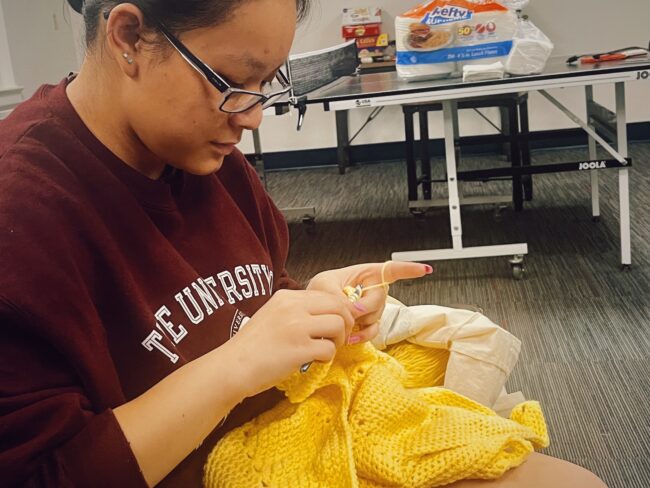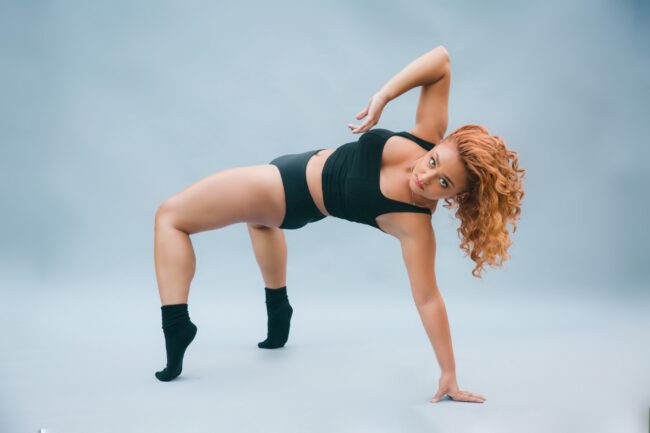Her hand gripped the bar as she rehearsed the warmup exercises she had done thousands of times before. She is supposed to be using the mirror to improve her technique.
Instead, Ashlyn Williams’ mind drifted elsewhere.
“I remember being in class sometimes and not even being able to focus on what the teacher was saying,” Williams said. “I was just thinking about the ways I could get back to being tiny.”
She watched as her ballet teacher went and pinched the fat of the girl practicing in front of her.
“This is from too much McDonald’s,” the teacher said.
Staring at her reflection in the mirror, Williams scanned every inch of skin across her body, obsessing over the ways she could lose more weight. Would she have to skip another meal today?
Williams, among other dancers, faces the need to fit the negative stereotype of the perfect ballerina. The industry often perpetuates dancers’ negative body image.
Pursuing dance more seriously has caused some girls to develop toxic relationships with their bodies and food. The necessity to conform to an industry’s body standards has even caused dancers to develop eating disorders.
“What is healthy for a person and what optimizes their sport might not match,” Dr. Kathryn Miller said.
Dr. Miller is a psychologist who specializes in eating disorders, depression and anxiety. Eating disorders are separated into two parts: behavior and thoughts.
“One of the criteria for an eating disorder is over valuation of weight, shape or eating,” Dr. Miller said. “If it’s too much time, attention and percent of your identity, then it’s not healthy.”
Dr. Miller advises her patients to focus on cutting out behaviors that intensify negative body image such as shape checking. Then, she works with them to reduce their negative thoughts regarding their bodies.
“A lot of people will grab body parts, measure body parts, look in the mirror excessively mirror check certain parts, so stopping all that is one method that can be helpful towards improving body image,” Dr. Miller said. “When you are always looking at what you hate you’re not feeling very good about it. When you stop doing that, you’re not hating your body as much.”
SMU freshman dance major, Belleza Mitchell, has a more positive body image when she takes a break from dancing during the holidays.
“I feel like I look better,” Mitchell said. “I feel better about myself, and I feel like ‘Ok, I look healthy, and I look fit.’”
The dance mirror has a detrimental effect on young dancer’s self-esteem and body image. Another SMU freshman dance major, Katherine Pawlowski, started changing her diet once she noticed in the dance class mirror that her “perfect ballet body” was changing during puberty.
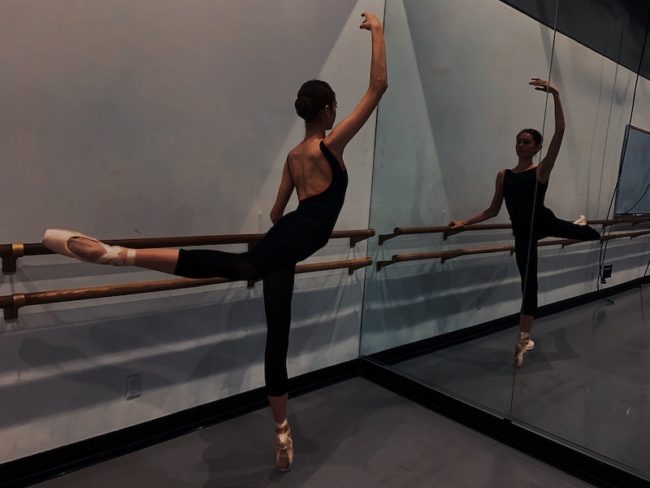
“I think dance does take a toll on young girls psychologically since we are constantly being trained to look in the mirror to see what is wrong and try to fix it,” Pawlowski said. “This then carries on into not just what movements you can fix, but also what you can change about yourself.”
Pawlowski began losing weight quickly and soon developed an eating disorder. Her drastic weight lost prompted mixed messages from her coaches.
“When I had lost a lot of weight, one of my male ballet teachers would comment on how great I look and that I am in perfect shape to audition for companies,” Pawlowski said. “My female pointe ballet teacher however talked to me directly about my weight because she was concerned on how much and how fast I was losing weight.”
However, SMU Meadows Dance program seems to be a beacon of hope for their student dancers. SMU’s dance department demonstrates that there is a place for body positivity in an industry known for its pathological body expectations and manipulation of size.
“There’s never a time where I’m looking at a student, where I am looking at body image,” jazz instructor Brandi Coleman said. “Our values here prioritize individuality within the community.”
Junior dance major Caeli Blake is one of many students who have benefited from SMU’s inclusive dance curriculum.
“I was very insecure about my body and the image it held,” Blake said. “With the help of many powerful dance instructors at my school I grew to love the way I perform and move. Not everyone is built the same and that’s what makes us so very unique.”
But this may not be the industry norm.
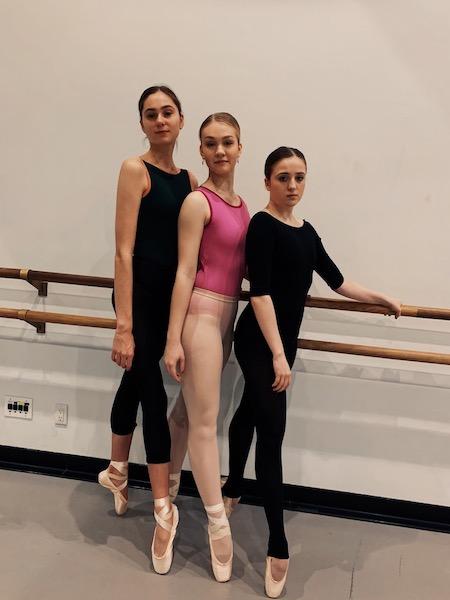
Nofer Institute of Occupational Medicine conducted a study in order to measure disordered eating and substance abuse and misuse in professional ballet dancers. The study found that 63% of the sample dancers had tried to lose weight during their ballet career, and 32% had tried to lose weight three times or more.
One of Pawlowski’s closest dance friends even spent one month in and out of the hospital because of weight loss. Her friend’s low body weight was causing her heart to slowly shut down.
The drive to lose weight in the dance industry can be a self-inflicted pressure, but ballet instructors often incentivize dancers, as well.
Mia Philippon was only 14 when she was told that she needed to get her body weight back under 100 pounds.
Dance instructors suggested weight loss once Philippon started getting less attention in class and was no longer being casted for roles. Philippon’s coach advised her to do 500 sit ups a day and meet with a nutritionist monthly if she wanted to join a ballet company.
On another occasion, Philippon was used as an example for what a perfect dancer’s body should look like during an audition. She was 12 at the time and competing against girls up to 6 years older than her.
“As a kid I thought it was a huge compliment, but I can’t picture hearing at 18 that this company wants to see my body be the same as a tiny prepubescent girl,” Philippon said.
According to a study in the National Center for Biotechnology Information, ballet dancers had an average body mass index of 18.85, whereas the control group average was found to have a body mass index of 23.41.
Not only did the study conclude that ballet dancers have a significantly lower body mass index, but it also determined that 50% of the study’s ballet dancers were considered to be underweight.
“Dance in particular can be a pathological weight and shape environment,” Dr. Miller said.
But the body image issues caused by ballet go beyond weight and the coveted thigh gap. The industry demands body specifics in shape and height too. Both Mitchell and Pawlowski faced discrimination because of their height.
“I’ve had roles taken away from me because I was too short even though I was the one who could deliver the role,” Mitchell said.
On the other hand, Pawlowski’s long legs – which gave her the “perfect ballet body” – were also the same thing that kept her from being casted. At 5 feet and 10 inches, she was too tall to partner with the boys in her studio.
Ballerinas are expected to be around 5 feet and 7 inches, extremely slender, with no fat, long thin legs and flat chest.
“As a classically trained ballet dancer, we are constantly told what our bodies need to look like and that most don’t fit the image,” Philippon said.
This pathological relationship between a dancer and their body caused Williams to drop her dance major into a minor at SMU. She has no plans on pursuing dance as a future career, but SMU empowers Williams to enjoy her favorite sport in healthier and moderated doses thanks to its positive and inclusive approach to dance.
“Just know that life is about a balance,” Williams said. “Life is a scale, and when you put too much on one end of a scale, you’re going to get thrown off somehow.”



